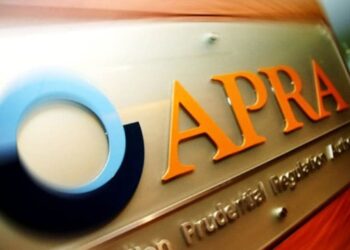New modelling from the Super Members Council (SMC) suggests property prices could rise by nearly $75,000 across capital cities by allowing first home owners to dip into their retirement savings.
The research joins a number of prolific economists, politicians, and agencies like the RBA and APRA, who have warned against using super for house deposits.
Modelling a scheme that would allow a first home buyer to take $50,000 from their super for a deposit, SMC’s econometric model found such a scheme fuelled demand in capital cities and led to price increases that quickly exceeded the $50,000 first home owners could withdraw from super.
The model showed prices would hike in all capital cities, ballooning by almost $86,000 in Perth, $80,000 in Sydney, $78,000 in Brisbane, and $70,000 in Melbourne.
Allowing first home buyers and women over 55 to draw down on their super for a deposit has been a policy previously proposed by the Coalition.
SMC suggested pouring retirement savings into housing, as proposed, would “inflame an already-inflated property market”.
“Using retirement savings for house deposits would just unleash a huge price hike,” said SMC chief executive Misha Schubert.
“That would mean higher and longer mortgages for Australians – and would quickly make capital cities even less affordable for new home buyers struggling to get into the market.”
Noting the intent of the policy was for Australians to own their own home, Schubert observed this idea ultimately would not achieve that.
“It would just make that goal even harder for first home buyers by making house prices even more expensive,” she said.
Existing international studies confirmed such schemes to dip into retirement savings for house deposits do not lift rates of home ownership.
Previously, a Mercer study of its Global Pension Index found that countries that allow early access to retirement savings for housing did not have higher rates of home ownership than Australia.
The study also concluded the common feature of the best global retirement systems was that they ‘preserved’ savings until retirement.
SMC also highlighted an academic review of the New Zealand super scheme KiwiSaver that allows withdrawals for housing found balances were far lower partly due to the country’s first home deposit withdrawal scheme.
SMC’s Schubert highlighted there remain long-lasting consequences for the country in allowing people to ‘raid’ their retirement savings.
“Breaking the seal on super leaves people poorer in retirement and costs every Australian taxpayer more from higher age pension costs,” she said.
Earlier this month, SMC research found the COVID-19-era Early Release of Super Scheme could hit Australian taxpayers with an up to $85 billion bill, mostly due to the higher pension costs of those who withdrew their savings.
It indicated that today’s 20-year-olds are projected to pay about $3,000 more tax to cover the higher pension bill caused by the scheme, which saw 3 million Australians withdraw $38 billion from super before retirement.
The SMC’s modelling showed the early release scheme’s costs in higher pensions and lower super tax receipts are expected to peak at $2.5 billion a year by the mid-2060s. Additionally, the council’s analysis revealed a 30-year-old who withdrew $20,000 from super could be left with about $93,600 less at retirement leaving them dramatically worse off in their lifetimes.




